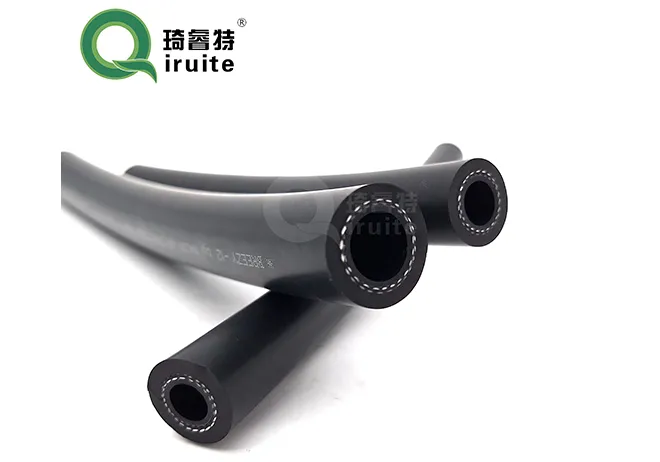irrigation pipe coupling
Understanding Irrigation Pipe Couplings An Essential Component for Effective Water Management
Irrigation systems play a crucial role in agriculture, especially in regions where rainfall is insufficient to support crop growth. Among the various components that make up these systems, irrigation pipe couplings are critical yet often overlooked elements. Understanding what these couplings are, their types, benefits, and installation processes can significantly enhance the efficiency of irrigation systems.
What Are Irrigation Pipe Couplings?
Irrigation pipe couplings are fittings used to connect two sections of irrigation pipes in a piping system. Essentially, they facilitate the smooth flow of water from one section of the pipe to another, ensuring that crops receive the necessary hydration. These couplings can come in various shapes and sizes, depending on the type of pipes being used, and they are crucial for maintaining a tight and secure connection.
Types of Irrigation Pipe Couplings
There are several types of irrigation pipe couplings, each designed for specific applications and materials. Here are some of the most common types
1. Compression Couplings Typically used with plastic pipes, compression couplings create a tight seal by compressing seals within the fitting. They are easy to install and don’t require any special tools, making them popular among both professionals and DIY enthusiasts.
2. Slip Couplings These are primarily utilized when a pipe needs to be extended or repaired. Slip couplings allow for a section of the pipe to slide within the coupling, making them useful for quick repairs.
3. Threaded Couplings Commonly found in metal piping systems, threaded couplings can be easily connected by screwing them together. They provide a strong and secure joint, which is essential in high-pressure situations.
4. Socket Weld Couplings Used primarily in industrial settings, these couplings are welded to the pipes, providing a permanent and robust connection. They are ideal for high-stress installations where durability is a priority.
5. Flanged Couplings These couplings have flared edges that allow for bolts to connect two pipe sections. Flanged couplings are often used in larger irrigation systems and offer the advantage of being easily disassembled for maintenance.
Benefits of Using Pipe Couplings
Irrigation pipe couplings provide numerous advantages that enhance the overall effectiveness of irrigation systems
. Some key benefits includeirrigation pipe coupling

- Leak Prevention Properly installed couplings prevent leaks that can waste precious water resources, ensuring that water is directed where it is needed most.
- Easy Maintenance Using couplings allows for easier maintenance and repairs. If a section of the pipe becomes damaged or clogged, couplings can be quickly removed, and repairs can be made without needing to replace entire sections of piping.
- Flexibility With various types of couplings available, irrigation systems can be easily modified or expanded as agricultural needs change. This versatility is essential in the ever-evolving landscape of farming.
- Cost-Effectiveness By preventing leaks and allowing for easy repairs, irrigation pipe couplings can save farmers money in both water costs and repair expenses.
Installation Process
Installing irrigation pipe couplings can vary depending on the type of coupling and material used. However, the general steps for installation are fairly consistent
1. Preparation Begin by gathering the necessary tools and materials. This may include the coupling, pipe cuttings, a wrench, and, if applicable, welding tools for socket weld couplings.
2. Cutting the Pipe Ensure the pipe ends are smooth and even by cutting them carefully. This is important for a good seal.
3. Lubrication For some types of couplings, using a lubricant can help ease the installation and ensure a tight fit.
4. Connection Align the pipes with the coupling and secure them in place. If using threaded or flange couplings, make sure to tighten with the appropriate tools while avoiding overtightening.
5. Testing Once installed, it’s crucial to test the connection for leaks by running water through the system and checking all joints.
Conclusion
Irrigation pipe couplings are essential components in effective water management within agricultural practices. By understanding their types, benefits, and installation processes, farmers and irrigation specialists can ensure that their systems remain efficient and reliable. Properly implemented irrigation systems with quality couplings not only conserve water but also support healthier crop yields, ultimately contributing to successful farming operations. In the age of growing environmental concerns, focusing on effective water management through tools like irrigation pipe couplings is more important than ever.
-
Ultimate Spiral Protection for Hoses & CablesNewsJun.26,2025
-
The Ultimate Quick-Connect Solutions for Every NeedNewsJun.26,2025
-
SAE J1401 Brake Hose: Reliable Choice for Safe BrakingNewsJun.26,2025
-
Reliable J2064 A/C Hoses for Real-World Cooling NeedsNewsJun.26,2025
-
Heavy-Duty Sewer Jetting Hoses Built to LastNewsJun.26,2025
-
Fix Power Steering Tube Leaks Fast – Durable & Affordable SolutionNewsJun.26,2025

